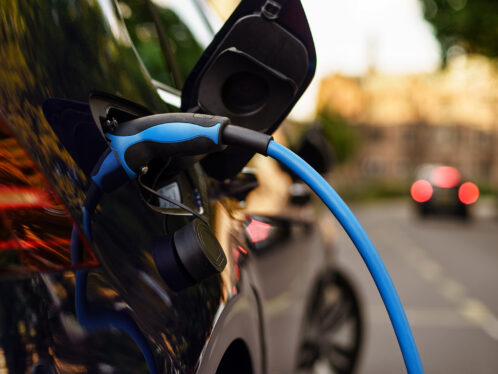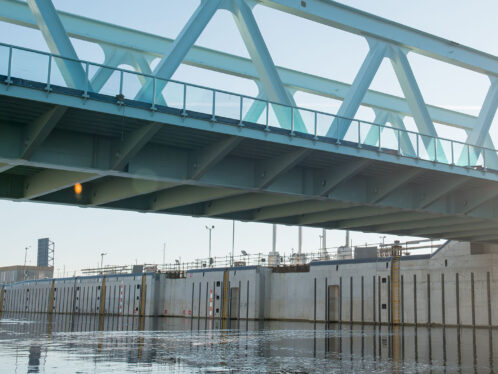
Turnaround at breakneck speed
Summary
Customisation and co-design
In the world of motorcycle racing, high performance on the track calls for high performance between manufacturers and suppliers. “The main technical feature of SKF deliveries to Ducati is flexibility,” explains Alberto Guerrini, who is responsible for the Ducati account at SKF. “We need to perform at the maximum levels, so special designs, special greases and a very large product assortment are all needed.”
Ducati buys bearings from six different SKF factories, with many customised and co-designed executions, as well as some standard products.
Over the past three years, Ducati has reduced its suppliers from 350 to 200, with a planned further reduction to 150. “We have a programme of preferred suppliers who work as partners with us,” says Giovanni Contino, director of purchasing for Ducati. “SKF is our partner for bearings because it is the leader in its field. We have been working together a long time, and we appreciate not only the quality of their products but their technical support.”
According to Guerrini, partnership success requires “a high grade of application engineering knowledge, and a very professional approach in scheduling and manufacturing the requested bearings.”
He pinpoints these capabilities as among the key assets of SKF – “being able to follow and develop Ducati’s ideas, both in development and manufacturing.”
When Italian motorcycle maker Ducati found itself heading off track, pulling the brakes was no solution. Instead the company chose to rev it up.When a motorcycle takes turns in a speed race, the cycle appears to hang in an almost-horizontal position parallel to – and seemingly centimetres from – the track. Both the rider’s skill and the bike’s technical capabilities are needed to keep it from falling.
The same is true in a fast corporate turnaround. Managerial skill can save a company in danger of failing, but it can’t save it for long; product quality must also be present if a shaky company hopes to complete the circuit – much less come out a winner.
Ducati Motor Holding SpA has weathered some rough terrain in its 75-year history, but it has weathered the bumps and survived with its reputation as the producer of “Ferraris on two wheels” brighter than ever.
Founded by Antonio Cavalieri Ducati and his three sons on July 4, 1926, Ducati is known for its racing-inspired motorcycles. Its cycles have won nine of the past 11 World Superbike Championship titles and more single race victories than all other manufacturers combined.
Four years ago, however, the company’s future was in doubt. “We were in danger of closing down permanently,” recalls Livio Lodi, assistant curator of the Ducati Museum. Ducati was then controlled by Cagiva SpA, a motorcycle-manufacturing conglomerate that had bought the company in 1985. Ducati’s history of successes on the racing circuit and its growing reputation among motorcycle enthusiasts was not enough to shield it from its parent’s financial problems.
Cagiva was at that time suffering a liquidity crisis and had more or less left Ducati to fend for itself. Investment was nil, quality control likewise; morale was low and production was as slow as the cycles were fast. Red was not only the colour of the Ducati racing team; it was the colour of the company’s balance sheet. “In all of 1984, we produced only 1,000 motorcycles,” says Lodi. By 1986 the factory was turning out just 20 cycles a day. In contrast, today Ducati produces more than 200 cycles each day, with total production of around 40,000 in 2000.
Salvation came in the form of Texas Pacific Group, a US investment company, which took control of Ducati in September 1996. TPG brought new capital, a new management philosophy and a new CEO in the form of Federico Minoli, an executive with extensive international experience.
TPG prepared for a formidable time trial – to turn Ducati around and float its shares on the stock market within three years.
To do so, the company adopted a three-pronged business strategy of improvements in marketing, promotion and image building, and production.
To increase market share, Ducati expanded its product range and strengthened its distribution network. The company currently offers cycles in four classes: Superbikes for the most performance-driven customers; SuperSport for racing enthusiasts; the Monster, the lowest-priced and most popular class; and Sport Touring bikes for customers seeking comfort with panache. The latter category debuted in 1997 with the ST2, named “best sport touring cycle of the year” by MotorCycle News.
1998 saw the introduction of the new 900SS, named “best design of the year” by MotorCycle News.
Because the Monster is very popular with women, the company asked well-known designers – Donna Karan and more recently Roberto Cavalli – to design special editions for female customers.
Distribution improvements included the introduction of Ducati Stores where the full range of products and accessories depicting the Ducati lifestyle are displayed to best advantage. By the end of 2000, the company had around 65 Ducati Stores in 16 countries, with plans for continued expansion.
The Internet is also a promising distribution channel. To launch its Web site on January 1, 2000, Ducati created a unique marketing programme – a limited-edition motorcycle, the MH900 Evoluzione, that was to be sold only on the Internet, and only to 2,000 buyers. Within the first half-hour, 500 had been snapped up, and the full run was sold out within three weeks. Of these, 38 percent were purchased by Japanese buyers, “which is like selling refrigerators to Eskimos,” notes Lodi.
Lifestyle image
Along with marketing, Ducati has worked to fortify its Ferrari-like image through new product opportunities in motorcycle accessories, apparel and other licensing arrangements. By the end of 2000, sales of accessories and apparel were about 7 percent of Ducati revenues and the goal is to raise that to 10 percent within the next few years. For comparison, dedicated brand-builder Harley-Davidson Inc sells over 200,000 motorcycles a year and, according to the company’s 2000 balance sheet, more than 20 percent of its turnover is generated by accessories and brand-related merchandise.
One unusual initiative is a video game, Ducati World, which was launched at the Bologna Motor Show in 2000. World Ducati Weekend was another successful image promotion. This event was first held in 1998 to celebrate the by-then-consolidated turnaround of the company. The second World Ducati Weekend took place in Bologna in June 2000, when 23,000 Ducatisti (as Ducati enthusiasts are called) gathered from all over the world to meet their favourite racing champions, tour the factory, visit the museum and generally have a good time.
Because Ducati’s image and its racetrack performance are inextricably intertwined, the company has continued to invest in the latter. Its unsurpassed record on the track underscores its continuing technological superiority. The 2001 racing season marked the debut of a new Ducati motor, the Testastretta, which replaces the previous Desmoquattro engine and adds 10 percent more power.
Ducati’s racing legend began almost 50 years ago, with the arrival of engineer Fabio Taglioni in 1954. He introduced the desmodromic control system to the company’s racing motorcycles in 1956: “desmodromic” has become a Ducati trademark. These valve gears control both the opening and closing of the valves by the camshaft, ensuring better performance and greater operational efficiency. His successor, Massimo Bordi, introduced the Desmoquattro and the Ducati 916. In 1998, a Ducati Design Centre was created, headed by award-winning designer Pierre Terblanche.
R&D focus
The third leg of TPG’s strategy has been to increase overall production efficiency. This is encompassed in a programme called Ducati Improvement Process (DIP). “We began implementing this in our factory in 1999,” says Giovanni Contino, Ducati’s director of purchasing, “and we saw results almost immediately. Next we went to our suppliers and are working with them to reduce waste. The third step will be to focus on R&D.”
Ducati has also been outsourcing some of its non-critical production, such as handling of replacement parts, product delivery and some sub-assembly. “We also have a project to outsource the receipt of parts,” reports Contino.
The results of all these efforts could be seen in Ducati’s results for 2000. The company generated about 700 billion lire (340 million US dollars) in revenues, with an operating profit of about 16 percent. Symbolic of the transformation from “turnaround” to “continuity” was the change of CEO in July 2000. Minoli became chairman of Ducati Holding and head of its Internet activities, passing the CEO title to Carlo di Biagio, formerly chief financial officer for the company.
Claudia Beth Flisi
a freelance journalist based in Treviso, Italy
photo Ducati




